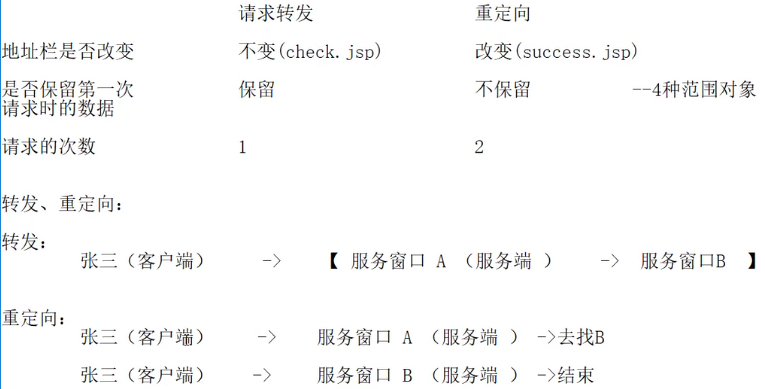jsp文件和内置对象的解析
对page解析

JSP九大内置对象(自带,无需new)
1 out:输出对象
2 request:请求对象,存储“客户端像服务端发送的请求信息”
3 response:响应对象
4 pageContext
5 session
6 application
7 config
8 page
9 exception
两种提交文件方式(推荐post)
get 提交方式:method=“get”,地址栏、超链接(<a href="xx">)请求方式 默认都为get
1.在地址栏显示请求信息(但容量有限 只有4-5KB)
2.出现乱码时:修改server.xml 更改tomcat的get编码 在post端口后加URIEncoding=“utf-8”
post 提交方式:文件上传操作必须是此方式
1 出现乱码时: request.setCharacterEncoding("utf-8");
=====================================================================================
request的常见方法:
1 request.getParameter(String str); 按str作为key返回对应value
2 request.getParameterValues(String str); 按str作为key返回对应多个value 用数组存储(例如checkbox按钮)
3 request.setCharacterEncoding("utf-8"); 设置请求编码
4 request.getRequestDispatcher("b.jsp").forward(request,response); 请求转发 a-》b(页面跳转的一种方式)
5 request.getServerContext(); 获取项目的ServletContext对象
以下是对上述方法的综合示例(实现注册与显示页面)
注册页面
<%@ page language="java" contentType="text/html; charset=utf-8" pageEncoding="utf-8"%> <!DOCTYPE html> <html> <head> <meta charset="utf-8"> <title>Insert title here</title> </head> <body> <form action="show.jsp"> 用户名:<input type="text" name="uname"/><br/> 密码: <input type="password" name="upwd"/><br/> 年龄: <input type="text" name="uage"/><br/> 爱好: <br/> <input type="checkbox" name="uhobbies" value="足球"/>足球 <input type="checkbox" name="uhobbies" value="篮球"/>篮球 <input type="checkbox" name="uhobbies" value="乒乓球"/>乒乓球<br/> <input type="submit" value="注册"> </form> </body> </html>
显示页面
<%@ page language="java" contentType="text/html; charset=utf-8" pageEncoding="utf-8"%> <!DOCTYPE html> <html> <head> <meta charset="utf-8"> <title>Insert title here</title> </head> <body> <% request.setCharacterEncoding("utf-8"); String name=request.getParameter("uname"); int age=Integer.parseInt( request.getParameter("uage")); String pwd=request.getParameter("upwd"); String[] hobbies=request.getParameterValues("unhobbies"); %> register complete!info as follow: 姓名:<%=name %><br/> 年龄:<%=age %><br/> 爱好:<br/> <% if(hobbies!=null){ for(String hobby:hobbies) out.print(hobby); } %> </body> </html>
response的常见方法:
1 response.addCookie(Cookie cookie)服务端向客户端增加Cookie对象
2 response.sendRedirect(String location) 重定向 (页面跳转的一种方式)
3 response.setContentType(String type):设置服务端响应编码(设置服务端的ContentType类型)
=====================================================================================================
两种页面跳转的方式
1.response.sendRedirect(String location) 重定向
2.request.getRequestDispatcher("b.jsp").forward(request,response); 请求转发
区别示意图:

Cookie(【key-value】不是内置对象):
Cookie 是由服务端生成的,在发送给客户端保存
作用:提高访问效率,但安全性较差
常用方法:
Cookie(String name,String value) 构造方法需new
String getName() 得到name
String getValue() 得到value
setMaxAge(int time) 最大有效期(秒)